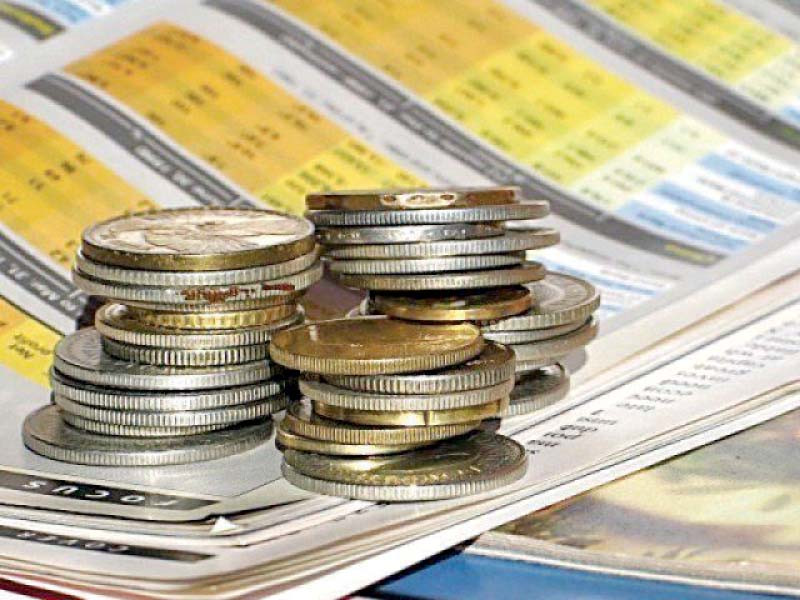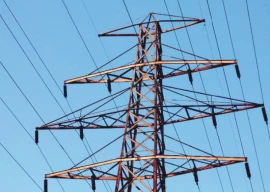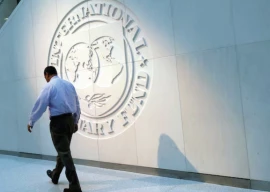
Under the lead of commercial banks, Pakistan’s entire financial sector continued to perform safe and sound during the challenging times of the Covid-19 pandemic mainly due to their risk-free colossal lending to the cash-strapped government, as the sector’s assets grew by 14% to Rs33.92 trillion during 2020.
The State Bank of Pakistan (SBP) on Wednesday released its Financial Stability Review 2020, according to which the financial system of Pakistan remained resilient during calendar year 2020 - a challenging year marked by the Covid-19 health crisis, which created exceptional uncertainty and contracted economic activity both domestically and internationally.
Digital banking, introduced during the pre-pandemic times, got traction and played a key role in keeping the financial system intact. However, “cybersecurity and money laundering/ terrorist financing remain the key operational risks to the financial sector,” the central bank said.
The banking sector has so far managed to avert potential losses from pre-pandemic borrowers through restructuring their loan repayments. However, the risk of corporates and households defaulting on payments still looms, especially in case the global and domestic economic recovery phase from the pandemic prolongs.
The performance of the financial sector amid pandemic-induced challenges remained satisfactory. The consolidated asset base of the financial sector rose by 14.08% to Rs33.92 trillion in 2020 and the financial depth, measured by financial assets to the gross domestic product (GDP), further increased to 77.53%.
The banking sector, which dominates the financial system of the country holding around 75% of financial sector assets and performing a majority of financial intermediation in the economy, fared quite well during the pandemic, showing strong financial soundness and resilience, and operational capabilities to continue the supply of services in the challenging circumstances.
“The (banking) sector posted strong growth of 14.24% in its asset base, which was driven almost entirely by an increase in investments in government securities (lending to the government),” the review said.
According to the report, “Weaker private sector demand for credit, an abundant inflow of deposits and higher intake of credit by the public sector also - among other things - to fund pandemic-related support measures remained the key drivers behind the growth in investments.”
“The after-tax earnings of the banking sector surged by 42.92% during CY20,” the report said, adding that a drastic cut in the policy rate from March to June 2020 transmitted into lower funding costs on deposits due to immediate re-pricing of saving deposits.
On the other hand, interest earnings were supported by an increase in the volume of investments in government securities as well as the lag in the re-pricing of loans, which are re-priced as per the frequency set in the loan agreement between the bank and the borrower.
The performance of Islamic banking institutions (IBIs) with a 30% increase in assets remained remarkable.
Banks need to continuously assess the situation, particularly the repayment capacity of borrowers, and if required, carry out necessary adjustments in their business models in consultation with relevant stakeholders. “The SBP, on its part, continues to closely watch the unfolding situation and remains ready to take whatever actions are necessary to safeguard financial stability,” it said.
The insurance and takaful industry maintained its performance as its asset base expanded by 13.03% during CY20. “Both life and non-life sectors demonstrated risk-averse behaviour by increasing their exposure in government securities.”
The growth in the asset base of development finance institutions (DFIs) decelerated due to retardation in investments. Unlike last year’s borrowing-driven expansion, assets were funded by a mix of deposits, equity and borrowing during CY20.
Current account, ratings
On the economic front, the current account balance posted a surplus after a gap of 17 years in 2020. Controlling the rising inflation, however, may continue to remain an uphill task. In the wake of swift and comprehensive policy response, the receding Covid-19 intensity and easing of associated mobility restrictions, signs of economic recovery emerged in the second half of CY20.
The Large Scale Manufacturing Index (LSMI) rebounded and the Business Confidence Index (BCI) became positive from August 2020 onwards.
On the external front, the current account balance posted a surplus for the first time since CY03.
Moreover, financial conditions implied by low interest rates, a relatively stable exchange rate and contained volatility in equity prices remained supportive. “Inflation, however, remained elevated owing to food price shocks.”
“The recovery was duly recognised by international rating agencies, including Moody’s which upgraded the sovereign rating of Pakistan from ‘under review for downgrade’ to ‘stable’ in August 2020,” the report said.
However, normalcy in social conditions and increased aggregate demand may push up oil and commodity prices, exerting pressures on the current account. Also, monetary policy normalisation in advanced economies may raise external funding costs.
Published in The Express Tribune, July 8th, 2021.
Like Business on Facebook, follow @TribuneBiz on Twitter to stay informed and join in the conversation.


1722237119-0/unepmployment-(1)1722237119-0-270x192.webp)


1722236723-0/sukuk445-(1)1722236723-0-270x192.webp)
















COMMENTS
Comments are moderated and generally will be posted if they are on-topic and not abusive.
For more information, please see our Comments FAQ